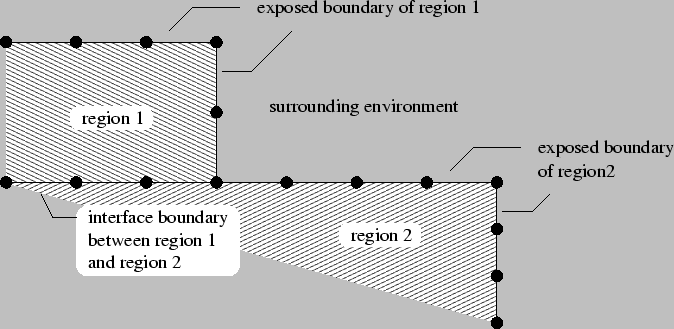
|
In comparison to volume models, boundaries are often treated inadequately, because any type of boundary needs a special implementation in the simulation system. But nevertheless the necessity of flexible boundary conditions for the evaluation of physical problems is undisputed. AMIGOS flexibility can also be used to manage complex boundary conditions since there is no difference for the model developer whether to develop a volume or a boundary model. Internally, different mechanisms are necessary for the boundaries.
AMIGOS distinguishes between two types of boundaries (Fig. 4.10 and Fig. 4.11):
AMIGOS detects interconnections between regions in case of point equality of grids, and extracts these interfaces as separate meshes but with reduced element dimensionality (Fig. 4.11). All remaining boundaries are treated as exposed boundaries. With the use of the Input & Control Interface the user can assign a model of choice to an extracted boundary no matter which type it is.